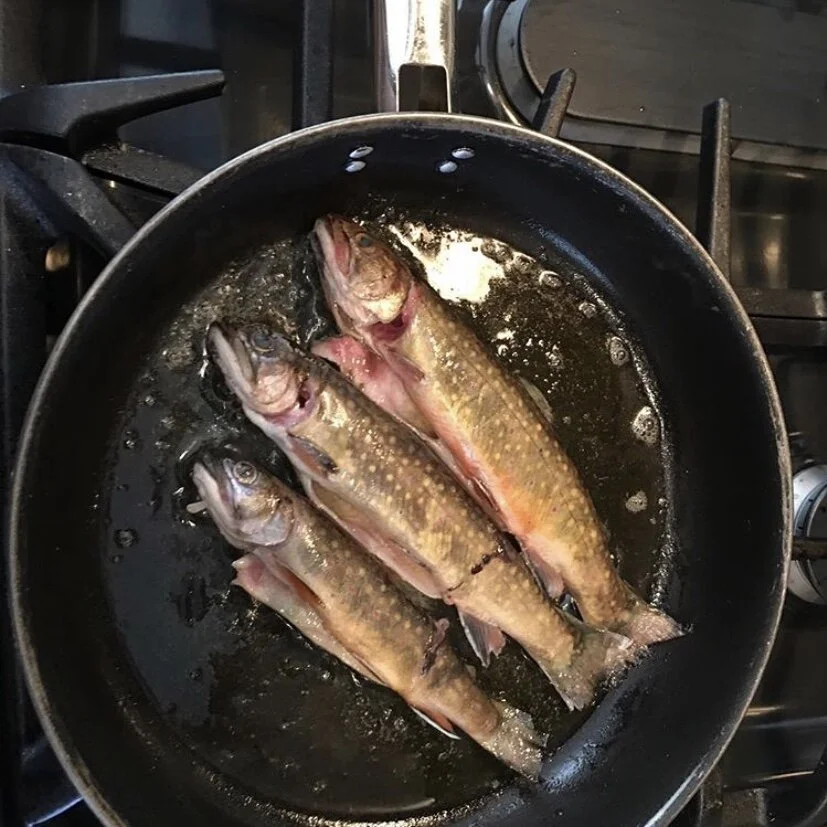Casting A Fly Rod
As you lift your rod tip towards the clouds your line starts its progression of breaking water tension inch by inch. From low tip and total contact to a tip high waiting to feel the line splay out behind you. The rod will “load” as the line is parallel to the water, then with the back cast seemingly pulling at the very fly you want to place at distance in front of you, the forward stroke begins. If this half has gone perfectly the forward cast is all but done. Push the tip forward with a slightly stiff arm and break your wrist over as you feel the weight of the line pull in front of you. When done correctly, with timing and line control, your fly will land like a milkweed seed as it finds a final destination. When any part of this goes awry, chances are you’ll end up with a pile of neon line and tippet with a fly tangled in somewhere all in a ball in front of you.
The how to cast a fly is basic in its simplest form. This is what we are about to cover. There are, for all intents and purposes, two casts that you need to know. One is the Overhead Cast and the other is the Roll Cast. There are many other casts but these two will get you through most of the situations you may encounter fly fishing. To practice these, the best way is to try and do them in an open place with still water, like a pond with not a lot of trees or cover around it. Lay the Line out on the water. Water tension on the fly line makes the rod easier to “load” which leads to less false casting.
The Overhead Cast is explained as the basic cast everyone pictures. Assuming the rod is in your right hand pull line off of the reel with your left hand. Grip the rod on the handle with your fingers around the grip and your thumb pointed down the “spine” of the rod. As you bring the rod back behind you your line will follow the motion. You are casting the line not the fly. For a novice angler look at your rod tip. You should stop your “backcast” when your arm is at 90 degrees and your rod tip just past that. When you’re in this position watch for your line to straighten all the way out behind you. When this happens you should feel the total weight of the line in the rod. Understanding feeling this “load” will come with practice. When you want the line to go farther in front you have to repeat this process multiple times without the line touching the water again, pulling more line off the reel and feeding it up with your left hand gradually. That left hand will pull the line down as you back cast and feed line forward as you cast forward. When you are satisfied that there is enough line out to equal the distance you want your fly to go, only then do you break your arm over all the way pointing your thumb at the intended landing zone all while loosening your grip on the line with the left hand. Where your thumb points is where the fly should go. This process is slower than you would expect. The amount of your arm that should move is often explained as this: pretend there is a book gripped under your arm between the inside of your bicep/tricep and your ribs. Now perform a backcast and forward cast and do not drop the book.
Big fish, flies and water is where the overhead cast shines. All of these conditions were present for this Steelhead.
The Roll Cast is arguably the most useful and underrated cast in fly fishing- master this cast. With the line in front of you on the water, lift your rod tip up towards the sky. As you do this motion the fly line will begin to make a bow or loop heading behind you. When the fly line crosses behind the vertical rod and makes a D with the straight part of the D being your rod and the line making up the curved part impart the same forward stroke you would during the overhead cast. The line will follow the loop and lay out in a straight presentation. It is a very simple cast but can be used in a lot of situations.
So that was the “How,” so now is the “Why”. You would use an Overhead cast for any sort of casting presentation that is at a distance greater than say twenty feet. This is the basic fly fishing cast. When you first pictured yourself fly fishing this is the cast you picture yourself doing. We used this to target cover, beaks or eddies. This cast is often used to present big flies like Streamers and very small flies like tiny Dry Flies because in either case putting yourself at a greater distance from the fish is beneficial. When in doubt you can most likely use an overhand cast to drop the fly where you want it.
Small flies, small streams and precision are what the roll cast is all about. Like these size 16 Zebra Midges the author tied.
The Roll Cast is to fly fishing as the putter is to golf. Precise, accurate and repeatable. The Roll Cast is used to present Nymphs or Emergers quite a bit. It can be used very effectively at sub-twenty foot distances. Small streams can be picked apart with roll casts from one position. This form of casting is also great for repeating drifts. Remember that often when a trout is in a “Feeding Lie” if that fish moves, generally another will move into that same spot. So if you catch fish number one, number two might be a rinse and repeat away. Roll Casts are also very helpful when there are a lot of overhanging branches and the like around you. This cast happens almost entirely in front of the angler.
Take your rod to some still water and give these a try. Once you feel like you get it right as much as you do it wrong, go find the streams in your area. Even we still end up with a ball of neon and tippet with a fly buried in there somewhere.
The end goal of a lot of my fly fishing adventures. I enjoy taking a few home for the pan.




